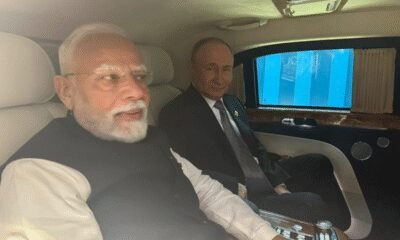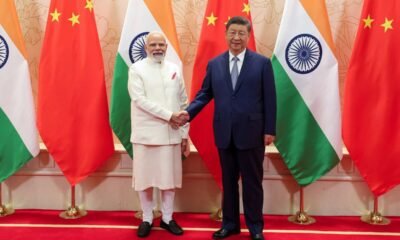Travel Guides & Articles
Odisha Showcases Thriving Tourism Potential as the Prestigious IATO Meet Highlights Cultural Heritage, Connectivity, and Expanding Travel Opportunities Across India
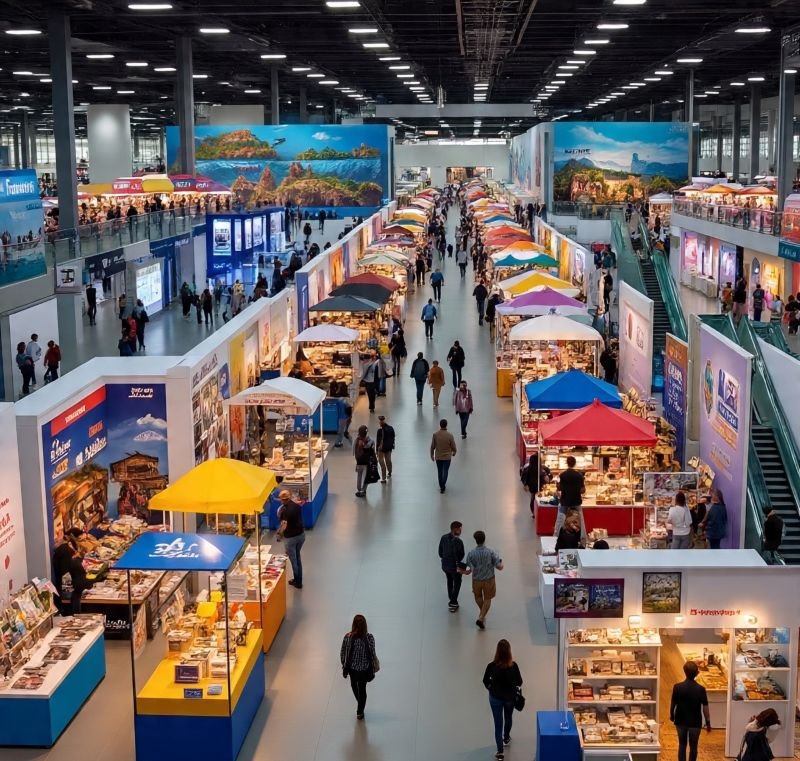
Published on
August 22, 2025
What It Means for the Global Travel Industry
Analysts concluded that the convention held in Puri demonstrated how even regional destinations could create ripple effects across the global tourism landscape. It was conveyed that strategies and ideas emerging from this gathering were capable of setting new benchmarks for how international travelers perceived both Odisha and India.
Specialists explained that, if the initiatives discussed were carried out with determination, the tourism industry might see fresh standards emerge: sustainability woven into mainstream tourism, immersive cultural experiences gaining prominence, and responsible growth becoming a shared priority.
They remarked that this movement highlighted how destinations once seen as “emerging” were now positioned to challenge long-standing tourism giants. The consensus was that authenticity, heritage, and innovation were increasingly becoming the three pillars of success. Observers suggested that these principles, actively pursued by Odisha, could eventually transform global travel norms.
The view that emerged was that such actions would not only strengthen India’s position internationally but also give global travelers fresh reasons to choose destinations like Odisha over more commercialized hubs. Industry experts underlined that this evolution had the power to reshape the competitive tourism map for decades to come.
Looking Ahead: A Defining Turning Point in Tourism
Commentators suggested that the 40th Annual Tourism Convention in Puri represented more than an event—it was portrayed as a turning point in the broader story of India’s tourism growth.
They stated that bringing together visionaries, planners, and industry professionals allowed for discussions that could determine the shape of the industry well beyond 2030. According to observers, for Odisha, the gathering was not simply a chance to promote its attractions but rather a carefully calculated step to establish itself as a leader in sustainable tourism development, cultural protection, and cross-border collaboration.
At the same time, they acknowledged that there was still an open question: Would these strategies and partnerships turn into a measurable increase in international tourist arrivals? Analysts stressed that while the vision was powerful, its real impact would only become clear as initiatives unfolded in the coming years.
Despite such uncertainties, it was said that the convention had already etched its place as a historic moment for India’s tourism journey, marking a visible shift in how the country intended to present itself to the world.
Global Ripple Effects on Travelers
Experts observed that the impact of the Puri convention was not restricted to Odisha alone. They explained that the policies, partnerships, and ideas shared at the gathering could create direct benefits for international travelers choosing to explore India.
It was suggested that global visitors were likely to notice several changes over time:
- Easier access to India’s interconnected travel circuits, making journeys smoother and more connected.
- Eco-conscious travel integrated into regular itineraries, ensuring that sustainability was no longer an optional niche but a standard expectation.
- Immersive cultural opportunities, where tourists could live and experience the traditions, heritage, and community spirit of the regions they visited.
Observers emphasized that such changes would gradually redefine international travel to India, shifting experiences away from superficial sightseeing toward journeys rooted in authenticity, responsibility, and deeper cultural connections.
Many remarked that Odisha’s holistic approach, blending its heritage, natural beauty, and modern innovation, might become an influential model for other destinations looking to align growth with cultural and environmental care.
Odisha’s Aspirations on the Global Tourism Map
Industry voices conveyed that by hosting this prestigious event, Odisha had unmistakably announced its global ambitions. Analysts shared that the state appeared determined to make tourism a cornerstone of its economy, with the dual goals of creating large-scale employment opportunities and safeguarding its cultural assets.
The gathering was said to serve as a launchpad for fostering deeper ties with global networks of tourism professionals. Observers speculated that such connections could significantly enhance the state’s international reputation, positioning it to attract a greater volume of travelers from around the world in the near future.
Specialists emphasized that in a tourism industry growing more competitive by the day, authentic experiences, sustainability, and cultural depth were emerging as the decisive factors in travel decisions. It was noted that Odisha’s alignment with these priorities placed it on solid ground in the global race for attention.
Immersive Highlights and Learning Sessions
Commentators recalled that the convention unfolded through a variety of interactive sessions, dialogues, and curated experiences, each designed to inspire collaboration and fresh ideas.
Among the highlights most frequently cited were:
- Business Dialogues and Knowledge Exchanges: These sessions focused on the future of sustainable tourism, opportunities for film tourism, the expansion of cruise travel, and fresh strategies to revitalize India’s image as a world-class destination.
- Spotlight on Odisha: A dedicated segment showcased Odisha’s strengths in heritage travel, eco-tourism, coastal retreats, and spiritual journeys. During this highlight, the state unveiled its ambitious Vision 2036 and Vision 2047 roadmaps—long-term strategies aimed at positioning itself as a premier tourism hub.
- Experiential Tours: Delegates participated in specially curated tours that allowed them to explore cultural landmarks, natural landscapes, and indigenous traditions of the state. Observers commented that these immersive experiences gave participants a deeper appreciation of Odisha’s treasures, showcasing the state’s potential for global tourism growth.
It was remarked that these elements demonstrated Odisha’s multifaceted strategy, blending innovation, sustainability, and authenticity to align with the evolving preferences of international travelers.
A Theme Focused on the Future
Analysts highlighted that the chosen theme—“Rejuvenate Inbound at 2030”—was both ambitious and symbolic. They explained that it expressed the sector’s long-term vision, reflecting a commitment to ensuring that growth was tied to sustainability, innovation, and cultural richness.
Reports stated that more than 1,000 delegates participated, including domestic and international operators, investors, and media professionals. Such attendance was interpreted as a signal that India’s tourism industry was entering a phase of transformation.
Observers remarked that by placing 2030 as a milestone year, stakeholders emphasized their belief that the industry could undergo dramatic progress by that point. For Odisha, its active role within this framework was said to elevate the state’s importance on the national tourism map.
A Grand Beginning in Puri
Observers recalled that the opening ceremony of the convention was held at the Swosti Premium Beach Resorts in Puri, which was described as both grand and symbolic. Reports suggested that the presence of both national and state leaders was widely seen as a display of collective commitment to advancing tourism.
Commentators explained that this unified effort reflected a clear focus on boosting inbound travel and creating favorable conditions for sector-wide growth. For Odisha, the opening ceremony was interpreted as more than tradition—it was seen as the public unveiling of its ambition to secure recognition as one of the world’s most appealing travel destinations.
A Landmark Step Toward Tourism Leadership
Industry analysts stated that by hosting the 40th Annual Convention of leading tour operators between August 22 and August 25, 2025, Odisha had placed itself firmly in the spotlight of global tourism. This, they argued, was more than an event—it was described as a landmark achievement reflecting the state’s commitment to becoming a decisive player in the global industry.
Specialists expressed that the gathering was not simply about formality. It was understood as a strategic declaration of Odisha’s determination to use its cultural heritage, natural beauty, and spiritual depth as tools to transform into an international magnet for travelers.
It was added that this initiative also symbolized the ambition to reshape global perceptions of India’s tourism, while signaling that the country was actively preparing to address the changing expectations of global travelers.
Travel Guides & Articles
Modi and Putin affirm special relationship as India faces steep US tariffs over Russian oil imports : NPR
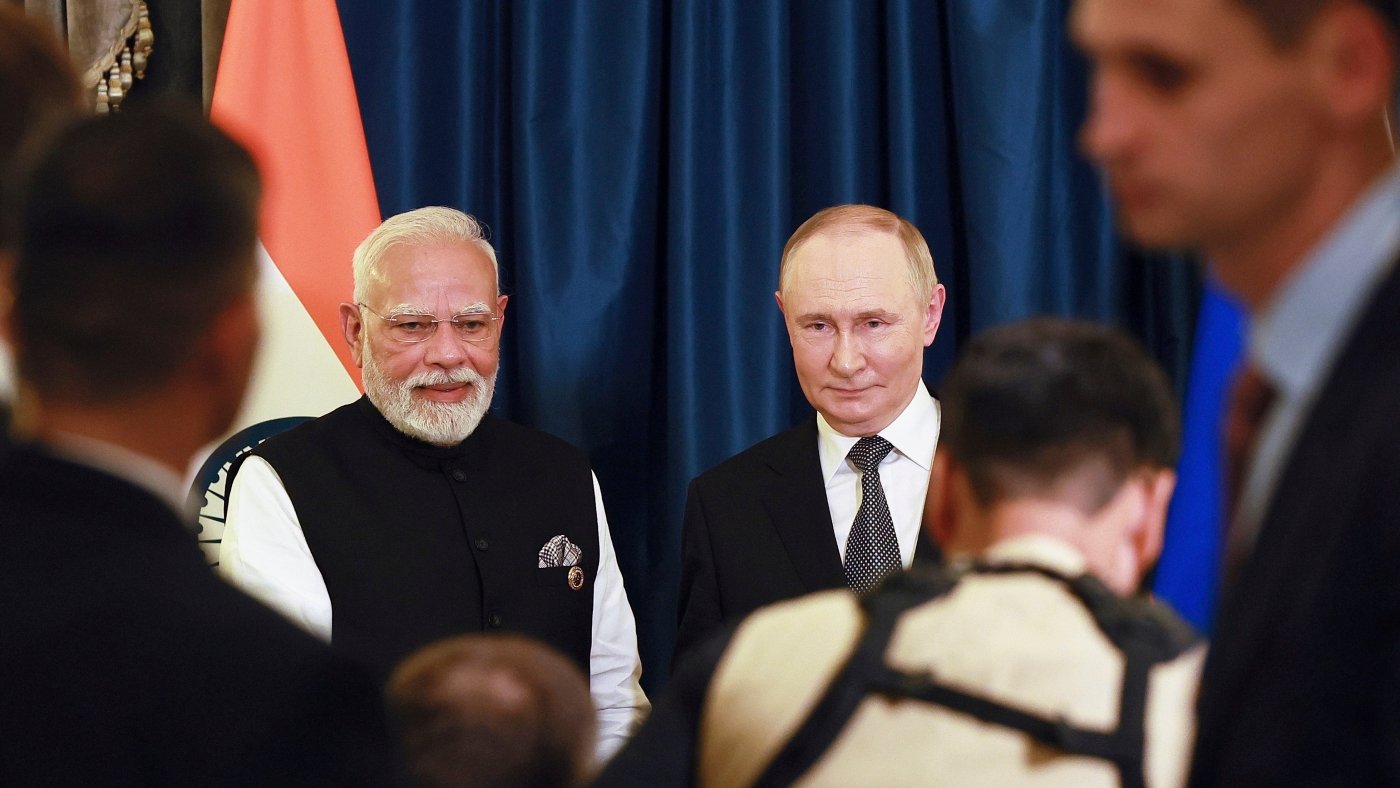
Indian Prime Minister Narendra Modi, left, and Russian President Vladimir Putin pose during their meeting on the sidelines of the Shanghai Cooperation Organization (SCO) summit in Tianjin, China, Monday, Sept. 1, 2025.
Vladimir Smirnov/AP/Pool Sputnik Kremlin
hide caption
toggle caption
Vladimir Smirnov/AP/Pool Sputnik Kremlin
TIANJIN, China — Indian Prime Minister Narendra Modi and Russian President Vladimir Putin met on the sidelines of a regional summit in China on Monday in a show of deepening ties when New Delhi’s relations with Washington are strained over the purchase of Russian oil.
The two leaders held talks after attending the key session of the Shanghai Cooperation Organization gathering in the port city of Tianjin, where discussions focused on regional stability, bilateral trade and energy cooperation.
In his remarks to open the talks, Modi termed the partnership with Moscow as “special and privileged.” Putin addressed Modi as a “dear friend” and hailed Russia’s ties with India as special, friendly and trusting.
“Russia and India have maintained special relations for decades. Friendly, trusting. This is the foundation for the development of our relations in the future,” Putin said.
Putin plans to travel to India in December for the 23rd India-Russia annual summit, according to his foreign affairs adviser, Yuri Ushakov.
Relationships on display
Modi used the SCO meeting to welcome the initiatives aimed at halting the conflict between Russia and Ukraine and called on the stakeholders to move forward constructively.
“To end the conflict soonest and establish peace permanently, we need to find out a way. It’s a call of the entire humanity,” Modi said.
Putin was accompanied by a large delegation that included top government officials. Russian state media reported that before sitting down for their formal meeting, Putin and Modi spoke one-on-one for almost an hour in a Russian-made limousine that Putin regularly takes on foreign trips.
Moments before the leaders lined up for a group photo, Modi was seen clasping Putin’s hand with the gusto of an old friend, bursting into his trademark hearty laughter. The moment was infectious as Putin grinned and chuckled, while Chinese President Xi Jinping gave a measured smile. The trio, ringed by watchful interlocuters, chatted animatedly for a few seconds.
Modi met Xi ahead of the opening of the summit Sunday and the two leaders pledged to resolve their border differences and bolster cooperation.
Washington pushing together China, Russia and India
Monday’s bilateral meeting between Modi and Putin carried added significance by coming days after U.S. President Donald Trump imposed an additional 25% tariffs on Indian imports, raising the total duties to a steep 50%, in retaliation for India’s continued purchases of discounted Russian oil.
Washington has repeatedly warned New Delhi against buying Russian crude, which it said was partly keeping Moscow’s revenues afloat to fund the Ukraine war. India has defended its imports as essential for meeting the growing energy needs of its 1.4 billion people.
Analysts said Trump’s steep tariffs and the tone coming from the White House have pushed New Delhi closer to China and Russia.
“While India-China reengagements started much before Trump, his policies are accelerating a process whereby India seems to be working much more closely with China and Russia to push back against economic unilateralism it is witnessing from the U.S.,” said Harsh Pant, vice president of foreign policy at New Delhi based think tank the Observer Research Foundation.
Modi travelled to Russia twice last year. The first was a visit to Moscow for talks with Putin in July, which was his first trip to Russia since the full-scale invasion of Ukraine by the Kremlin’s forces in February 2022. He then traveled to Kazan in October for the summit of the BRICS bloc of developing economies.
Trump’s reaction
As Xi, Putin and Modi showed extraordinary unity, Trump on Monday continued to jab at New Delhi.
As the summit wrapped up, Trump charged in a social media post that historically the U.S.-India trade relationship “has been a totally one sided disaster!” Trump also bristled about India surging its Russian oil purchases and signaled no trade deal with New Delhi is in sight.
“They have now offered to cut their Tariffs to nothing, but it’s getting late,” Trump said in the posting on his Truth Social platform. “They should have done so years ago. Just some simple facts for people to ponder!!!”
SCO nations share a history of business partnerships
Russia has had strong ties with India since the Cold War, and New Delhi’s importance as a key trading partner has grown since the war between Moscow and Ukraine.
China and India have become key buyers of Russian oil after the West shunned Russian exports to punish Moscow.
India historically bought most of its crude from the Middle East, but the world’s third-largest crude importer after China and the U.S. has started buying Russian oil available at discounted rates. Russia now accounts for around 37% of India’s total oil imports, according to analysts and Indian officials.
Trade between India and Russia has sharply increased in recent years, reaching a record $68.7 billion in the 2024-25 financial year. Imports from Russia reached around $64 billion and exports from India totaled about $5 billion, according to Indian government data.
The two nations aspire to bolster trade to $100 billion by 2030.
Modi’s meeting with Putin underscored New Delhi’s stance that India prized its old and reliable strategic partners and has sufficient strategic autonomy in its foreign policy to maintain and strengthen its multi-dimensional partnership, said Sreeram Sundar Chaulia, an international affairs expert at New Delhi’s Jindal School of International Affairs.
At the same time, the Indian government hopes the present rough weather between India and the U.S. is a temporary aberration, Chaulia said.
“Then, India can return happily to having the Russian cake and eating the American pie as part of its multi-alignment strategy,” Chaulia said.
Travel Guides & Articles
Fatehpur Sikri, India, travel guide: Seven highlights to see

Seven wonders within Fatehpur Sikri, India
This monumental Mughal capital 37 kilometres outside Agra was founded in 1571 but lasted scant decades. The magnificently mournful ruins are one of India’s most underrated sights.
1 Make a grand entrance through Victory Gateway
As you lurch out of Agra, dodging cars and camel carts, your first sight of this ruined city is an immense hilltop gateway, one of the world’s biggest, wobbling like a mirage in the heat. Victory Gateway was built in 1602 from red sandstone and white marble to commemorate Emperor Akbar’s military triumphs, although its Persian inscription warns the world doesn’t last. This by itself qualifies as a mighty monument, and the views are splendid.
2 Pause in admiration inside the mosque
Step through the gateway into the courtyard of the Friday Mosque and you get the first impact of this tremendous ensemble. Everything is built of red sandstone, everything outsized, and yet the decorative detail – window frames, balconies, roof brackets – wonderfully carved. The mosque is one of India’s finest and largest and centres on the tomb of a Sufi, inlaid with mother-of-pearl. Local women come to tie strings on the marble lattice in hope of being granted children.
3 Check out the architecture in the Audience Hall
This gloriously startling building in the royal quarter is where Akbar consulted advisers. The Diwan-i-Khas has wall recesses that served as bookshelves for royal documents and texts. However, your eyes will surely be on the enormous and wildly ornate octagonal pillar of the main hall, which rises from the centre of the room like the handle of an umbrella and props up an elevated walkway that resembles the balcony in an opera house.
4 Look up in the Imperial Treasury
Fatehpur Sikri shows wide Hindu, Islamic and Persian influences but this genius building next to the Audience Hall takes inspiration from Jain temple architecture and decorative sculpture. Stone safes are concealed in the walls, but gaze up: the brackets that hold up the ceiling are embellished with mythical elephant-headed sea monsters, said to guard treasures in the depths of the ocean. In the fields behind, don’t miss the odd-looking spiky tower erected in memory of Akbar’s beloved elephant Hiran.
5 Enjoy the faded frescoes in Mariam’s House
The harem complex has several fine pavilions, some showing Turkish influences and others covered with depictions of swans and horses. The carvings and fretwork are so fine in places you could mistake sandstone for wood. If you’re pressed for time, head straight to Mariam’s House, perhaps the best example. As a bonus, it has bright and sometimes surreal gold-tinted frescoes – look out for the diaphanous woman riding a gigantic parrot.
6 Wander through the other imperial quarters
This is the most impressive part of Fatehpur Sikri, erupting in columns, latticed screens and elaborately decorated architectural elements, and graced with ornamental pools and clipped gardens. Persian verses loop across the emperor’s bedroom or House of Dreams, although judging from his innumerable concubines Akbar spent scant time on sleep. The pool below the elevated kiosk cooled the bedchamber. This is just one of numerous buildings that might take an hour or two to admire.
7 Close your guidebook and get lost
Fatehpur Sikri was planned in the smallest detail: servants’ quarters, lavatory blocks, fountain drainage, masonry rings to hold silk canopies for courtyard shading. Take time to inspect the detail and soak up the melancholy magnificence away from the main visitor axis. Birds wheel overhead and squirrels sun themselves on walls. In the late afternoon the sandstone turns crimson, then orange and subtle pink before the light fades on this abandoned city of lost dreams.
The writer travelled as a guest of Incredible India incredibleindia.gov.in and Malaysia Airlines malaysiaairlines.com
Sign up for the Traveller Deals newsletter
Get exclusive travel deals delivered straight to your inbox. Sign up now.
Traveller Guides
From our partners
Travel Guides & Articles
Heavy rain alert in Delhi–Gurugram: IMD issues an orange alert; travel and safety advisory |
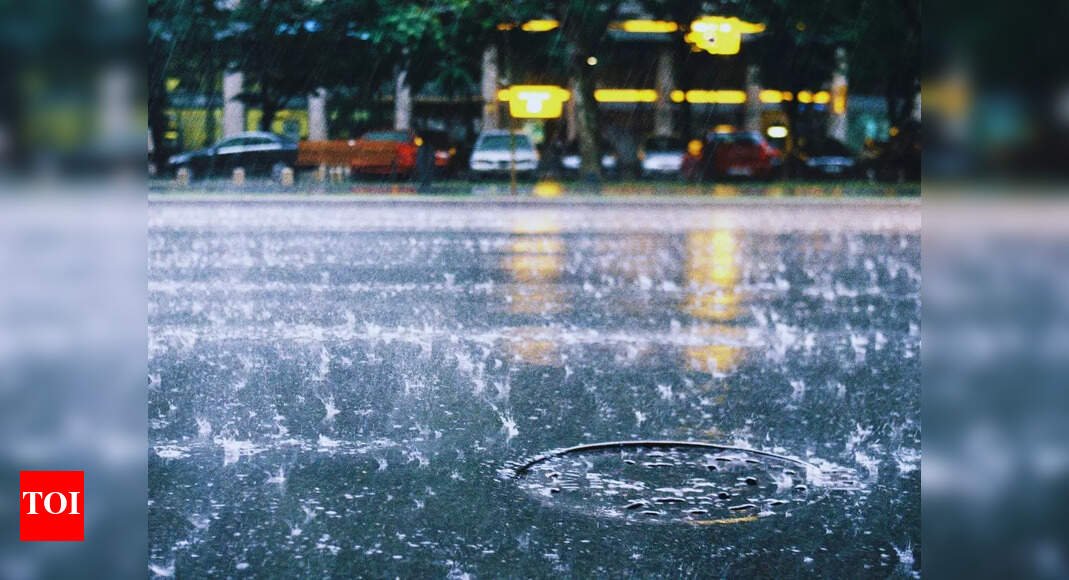
In a recent update, Delhi and its surrounding NCR cities, including Gurugram, Noida, and Faridabad, have received intense rainfall. The India Meteorological Department (IMD) has issued an orange alert for Delhi while a warning of very heavy rainfall and thunderstorms has been issued for Gurugram.Keeping the current situation in view, the District Disaster Management Authority has issued a travel advisory for Gurugram for 2nd September 2025. It reads:On September 1, 2025, Gurugram recorded over 100 mm of rainfall between 3 PM and 7 PM. The India Meteorological Department (IMD) has issued an Orange Alert, forecasting heavy to very heavy rainfall on September 2, 2025.In light of this warning:Corporate offices and private institutions in Gurugram district are advised to ask employees to work from home.
All schools in the district are directed to conduct online classes on September 2, 2025.On the other hand, Delhi too is experiencing non-stop rains which have caused waterlogging and long traffic across roads. Authorities are closely monitoring the Yamuna River too, which is expected to rise close to the danger mark of 206 metres on Tuesday. Low-lying areas are particularly vulnerable to flooding.India Meteorological Department forecastIn the present scenario, the India Meteorological Department (IMD) has issued an orange alert for Delhi for heavy rainfall. Similar alerts have been issued for NCR regions including Noida, Faridabad, and Gurugram. A yellow warning has been issued for Ghaziabad.Not only this, IMD has cautioned that northern India may experience heavy rainfall at least until September 5 especially for Uttarakhand, Himachal Pradesh, and Punjab which are under red and orange alerts.Travel disrupted, airlines issue advisoryAirlines such as IndiGo, Air India, SpiceJet, and Akasa too have issued warnings and advised people of possible delays and cancellations due to poor visibility. Passengers are advised to check flight status before leaving the house.Advisory
It is advised to avoid flood-prone zones, underpasses, and Yamuna ghats.Use public transport.For those in Gurugram, work from home is strongly recommended on September 2 as safety of people is more important.Keep a check on official IMD and local weather updates before planning anything.
-

 Business3 days ago
Business3 days agoThe Guardian view on Trump and the Fed: independence is no substitute for accountability | Editorial
-
Tools & Platforms3 weeks ago
Building Trust in Military AI Starts with Opening the Black Box – War on the Rocks
-

 Ethics & Policy1 month ago
Ethics & Policy1 month agoSDAIA Supports Saudi Arabia’s Leadership in Shaping Global AI Ethics, Policy, and Research – وكالة الأنباء السعودية
-

 Events & Conferences3 months ago
Events & Conferences3 months agoJourney to 1000 models: Scaling Instagram’s recommendation system
-

 Jobs & Careers2 months ago
Jobs & Careers2 months agoMumbai-based Perplexity Alternative Has 60k+ Users Without Funding
-

 Funding & Business2 months ago
Funding & Business2 months agoKayak and Expedia race to build AI travel agents that turn social posts into itineraries
-

 Education2 months ago
Education2 months agoVEX Robotics launches AI-powered classroom robotics system
-

 Podcasts & Talks2 months ago
Podcasts & Talks2 months agoHappy 4th of July! 🎆 Made with Veo 3 in Gemini
-

 Podcasts & Talks2 months ago
Podcasts & Talks2 months agoOpenAI 🤝 @teamganassi
-

 Mergers & Acquisitions2 months ago
Mergers & Acquisitions2 months agoDonald Trump suggests US government review subsidies to Elon Musk’s companies










